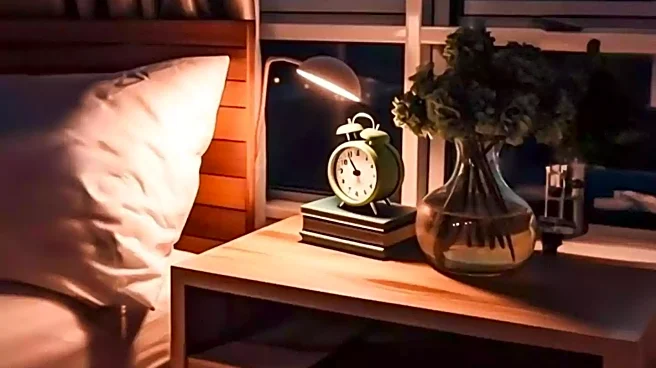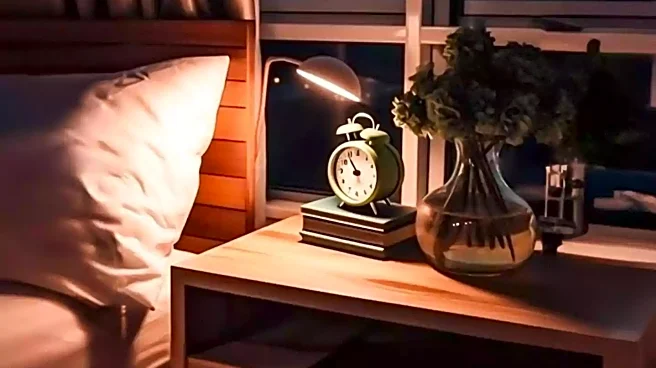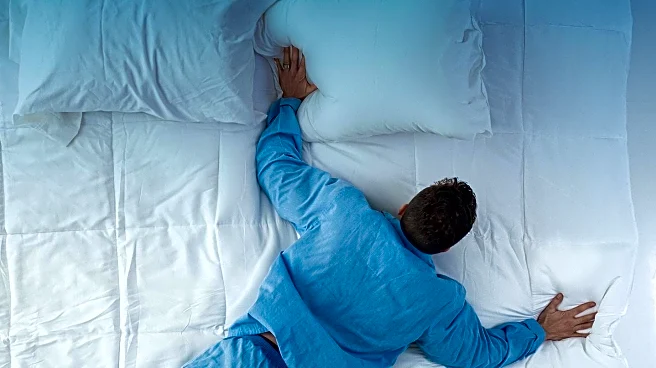What's Happening?
A recent exploration into sleep improvement techniques has highlighted the effectiveness of writing nightly to-do lists as a method to combat insomnia. The practice, which involves jotting down tasks for the following day, has been shown to help individuals fall asleep faster by alleviating stress and anxiety associated with upcoming responsibilities. This finding is supported by a study conducted by researchers from Baylor and Emory universities, which demonstrated that participants who engaged in this activity fell asleep more quickly than those who wrote about completed tasks. The study suggests that the act of transferring worries from the mind to paper can create a sense of relief, allowing the brain to relax and prepare for sleep. Additionally, sleep experts recommend other strategies such as maintaining a consistent sleep schedule, avoiding screens before bed, and practicing good sleep hygiene to further enhance sleep quality.
Why It's Important?
The significance of this research lies in its potential to offer a simple, non-pharmacological solution to a widespread issue affecting nearly half of the population: insomnia. By providing a practical method to improve sleep, the findings could have a substantial impact on public health, as adequate sleep is crucial for physical and emotional well-being. Improved sleep can enhance mood, judgment, memory, and even immune function, thereby reducing the risk of various health issues, including heart disease. For individuals struggling with sleep, adopting the practice of writing to-do lists could lead to better overall health outcomes and improved daily functioning. This approach also underscores the importance of addressing mental health and stress management as integral components of sleep health.
What's Next?
As awareness of the benefits of nightly to-do lists grows, it is likely that more individuals will incorporate this practice into their bedtime routines. Sleep experts may continue to explore additional non-invasive methods to improve sleep quality, potentially leading to broader recommendations for those suffering from insomnia. Healthcare providers might also consider integrating these findings into patient education, emphasizing the role of mental relaxation techniques in achieving better sleep. Further research could explore the long-term effects of this practice and its efficacy across different demographics.
Beyond the Headlines
The practice of writing to-do lists before bed not only addresses sleep issues but also highlights the broader cultural shift towards mindfulness and mental health awareness. As society increasingly recognizes the interconnectedness of mental and physical health, such simple yet effective strategies may gain traction as part of holistic health approaches. This development also raises questions about the role of technology in sleep disturbances, prompting further investigation into how digital detox practices can complement traditional sleep hygiene methods.











